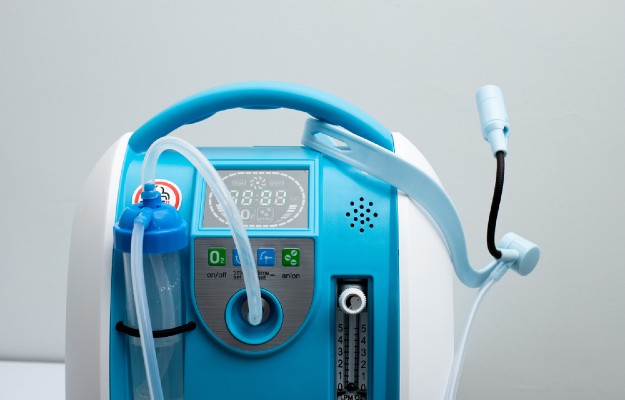The new coronavirus infection, COVID-19, has spread to almost the entire world affecting more than six lakh people and taking more than 28,717 lives as of 28 March 2020.
The virus that causes COVID-19 - SARS-CoV-2 - binds to angiotensin-converting enzyme 2 (ACE2) receptors present in the respiratory tracts of a person. This allows the virus to enter the lungs. (Read more: What are ACE2 receptors and what do they have to do with COVID-19?)
Though the common symptoms are cough, fever and shortness of breath, the more severe symptoms involve viral pneumonia and potentially fatal respiratory failure 10-14 days after contracting the disease.
Scientists have been comparing the virulence of two previous coronavirus outbreaks in this century - Middle East Respiratory Syndrome (MERS) in 2012 and Severe Acute Respiratory Syndrome (SARS) in 2002-03 - to COVID-19. The statistics of the last two coronaviruses are:
- Middle East Respiratory Syndrome (MERS) spread to 27 countries in the year 2012 before being contained. There were around 2,494 reported cases of this viral infection. With a fatality rate of 34.3%, MERS accounted for 858 deaths.
- Severe Acute Respiratory Syndrome (SARS) spread to 30 countries in the year 2003 before being contained. There were around 8,473 reported cases. With a fatality rate of 9.5% of those who fell sick, SARS accounted for 774 deaths.
Read on to know about the transmission rate and mortality of COVID-19 - a human coronavirus infection that was unheard of before 31 December 2019.
- What makes COVID-19 dangerous?
- How are COVID-19 and SARS similar?
- Why is SARS more deadly than COVID-19?
- Takeaways
What makes COVID-19 dangerous?
The outbreak of COVID-19 has been rapid and wide-spread. Researchers have found that COVID-19 is more contagious than SARS or MERS. Here's what we know:
- COVID-19 has an attacking rate of 83% which is alarmingly high, indicating a high rate of transmission.
- Though the clinical symptoms of COVID-19 range from mild to moderate, more severe symptoms and radiological abnormalities (in lungs) are seen in older patients.
- The transmission of SARS-CoV-2 (which causes COVID-19) is possible even from those who do not have any symptoms yet (symptoms can take 2-14 days to show up, and many patients don't have any pronounced symptoms at all). These people are also called asymptomatic carriers.
- There is a possibility of getting SARS-CoV-2 infection through faecal-oral transmission. Simply put, the infection can transfer from the faeces of an infected person.
How are COVID-19 and SARS similar?
According to various studies, the genetic structure of the virus that causes COVID-19 is very similar to that of the SARS virus (SARS-CoV). That is one of the reasons why COVID-19 is also known as SARS-CoV-2 infection. The similarities between SARS-CoV and SARS-CoV-2 are:
- Both SARS and COVID-19 initiate a cytokine storm in the body. A cytokine storm is a condition in which the body's immune system signals its cells like T-cells and macrophages to travel to the site of infection - this can do possible damage to body tissues and organs by increasing inflammation.
- Both SARS-CoV and SARS-CoV-2 have interferon inhibitors that restrict the activity of interferons. Interferons are proteins released by our bodies to fight viruses. The interferon inhibitors are different in both diseases.
- Both SARS-CoV and SARS-CoV-2 have inflammasome-activators that increase the levels of inflammation in the body.
Why is SARS more deadly than COVID-19?
Though COVID-19 has made many more people sick than SARS, scientists still believe that SARS is more life-threatening than COVID-19.
There are certain studies which show:
- SARS-CoV has the ability to suppress the antiviral immunity; that is, the immunity of the body to fight against the virus.
- SARS-CoV is extremely potent in activating the pro-inflammatory response which, in turn, activates the cytokine storm. This increases inflammation in the affected body parts, especially the respiratory tract.
- SARS-CoV has the ability to activate the NLRP3 inflammasome that promotes cell death and increases the proinflammatory response in the body.
Takeaways
Though SARS had a higher mortality rate, SARS-CoV-2 is more infectious. This makes it dangerous for at least three reasons.
- As more people contract this infection worldwide, older people, infants, people living with chronic illnesses, people with compromised immunity and smokers too will be among them. These vulnerable populations are more likely to experience severe symptoms of COVID-19, including viral pneumonia and death.
- As the disease can be transmitted by asymptomatic people, it is very hard to contain its spread.
- Though the mortality rate of COVID-19 is lower than SARS, even a small percentage of millions of patients will be a high absolute number.
(Scientists say it will take some time to determine the true mortality rate of COVID-19, as the pandemic was still unfolding as of March 2020. What scientists do know for sure is that this rate is lower than the 9.5% mortality rate for SARS and higher than the 0.1% mortality rate of the flu which is caused by the influenza virus).
Doctors for What makes COVID-19 dangerous?

Dr Rahul Gam
Infectious Disease
8 Years of Experience

Dr. Arun R
Infectious Disease
5 Years of Experience

Dr. Neha Gupta
Infectious Disease
16 Years of Experience

Dr. Anupama Kumar
Infectious Disease
Medicines / Products that contain What makes COVID-19 dangerous?
- Proctosedyl BD Cream - ₹108
- Anovate Cream - ₹140
- Pilo GO Cream - ₹80
- Covifor Injection - ₹3780
- Fabiflu 200 Mg Tablet - ₹1292
- Fabiflu 400 Tablet - ₹856
- Fabiflu (Favipiravir) 400 Mg Tablet - ₹1224
- Fabiflu (Favipiravir) 200 Mg Tablet - ₹1292
- Remdesivir Injection - ₹10500
- Molusafe Capsule - ₹457
- Movfor 200 Mg Capsule - ₹2490
- Molflu 200 Mg Capsule - ₹1400
- Molulife 200 Capsule - ₹1399
- Cipmolnu 200 Mg Capsule - ₹2000
- Molxvir 200 Mg Capsule - ₹1520
- Immunocin Alpha Plus 1.6mg Injection - ₹5998
- Alzumab Injection - ₹8229
- Imualfa 1.6mg Injection 1ml - ₹2628
- Molnutor 200 Mg Capsule - ₹2000
- Sotrovimab Injection - ₹165000
- Nirmatrelvir - ₹5000
- Molnupiravir 200 Mg Capsule - ₹1400
- Covihalt 200 Tablet - ₹465
- Ciplenza Tablet - ₹646
- Itolizumab Injection - ₹8220
References
- Louisiana State University Health Sciences Center. ACE inhibitors and angiotensin receptor blockers may increase the risk of severe COVID-19, paper suggests. ScienceDaily. ScienceDaily, 23 March 2020.
- Onder G, Rezza G, Brusaferro S. Case-Fatality Rate and Characteristics of Patients Dying in Relation to COVID-19 in Italy. JAMA. Published online March 23, 2020. doi:10.1001/jama.2020.4683
- World Health Organization [Internet]. Geneva (SUI): World Health Organization; Coronavirus disease 2019 (COVID-19) Situation Report – 63
- Yuen, Kit-San et al. SARS-CoV-2 and COVID-19: The most important research questions. Cell & bioscience vol. 10 40. 16 Mar. 2020, doi:10.1186/s13578-020-00404-4


















